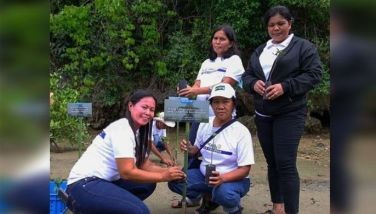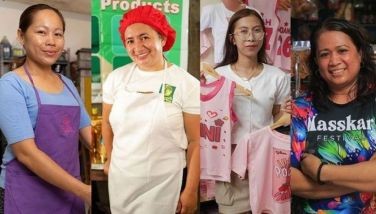Pre-Claveria surname usage in Cebu
Continuing our discussion on the Claveria surname decree of 1849, today we examine the use of "surnames" in some towns of Cebu Province before the decree. One provision of the decree allowed families to retain and register a surname if they could prove its use for four generations. Records from towns like Alcoy, Argao, Bantayan, Boljoon, Carcar, Dumanjug, Ginatilan, Liloan, Madridejos, Malabuyoc, Naga, Samboan, Santa Fe, Sibonga, and Tuburan are available for further study.
From these records, we learn that the adoption of official family names largely happened to comply with the decree. Although a full study of surname history across the country is still ongoing, initial findings show that aside from a few families who retained semi-official surnames or names not included in the Catalogo, nearly 90% of Cebu’s current surnames come from Claveria's decree. American historian Michael Cullinane's research on Cebuano history, particularly regarding family names, indicate that many elite families from Cebu City's Parian district adopted their last names only after 1849. Cullinane found that, before this time, only descendants of Spaniards, Spanish Creoles, or a small group of Christianized Chinese (Chinos Cristianos) had surnames. Some Spanish mestizo families, such as Cabrera, Duterte, and Rafols, retained their pre-1849 Hispanic surnames. However, for most non-Spanish or non-Chinese families, surname use was not common. Chinese mestizo families like Sanson, Climaco, and Regis had already adopted family names in the 1700s, allowing them to retain these names as well. Cullinane also observed that some had started using second names as identifiers, though this was inconsistent. For instance, the Osmeñas used “Agaton” from Don Severino Agaton, the Suicos used “Luis,” and the Velosos used “Del Rosario” to show familial connections.
In Opon, indigenous second names like Mangubat, Tumulak, and Dimataga were used, but Cullinane found that these names were not consistently inherited. By the mid-eighteenth century, these indigenous names had been replaced by Spanish Christian names. Families should thus be cautious when assuming an unbroken lineage of indigenous surnames. Similarly, Mandaue and other towns followed this pattern, using two Christian names without consistent surname transmission. While some families did adopt the father's second name for their children, this practice was not uniform.
In Argao, people typically carried two Christian names before the Claveria decree, similar to the rest of the country. For example, if a father was named Jose Alverto or Alverto Jose, his children might be named Agustin Alverto and Maria Alverta, such as the Flores family, though of indio heritage, frequently used “Alverto” for the men and “Alverta” for the women. Their earliest known ancestor, Gabriel Alverto, set this tradition. However, they eventually adopted the surname “Flores.” Another Spanish mestizo family, the Cabreras, originally used “Hernaez” as their last name. After the decree, they changed it to “Cabrera,” with one branch distinguishing themselves as “Taguenca-Cabrera.” Some surnames in Argao also existed even before the decree, such as Nazareno, Lucero, Dela Peña, de Loyola, Quintanilla, Ybañez, Ortega, and Carillo. These families retained and continue to use these names to this day.
A final example is Bantayan. Similar to Cebu City and Argao, majority of those with existing surnames prior to 1849 were mostly mestizo families. An initial study by Cebuano genealogist Noah Tan shows that about 33 surnames that were retained after the decree already existed prior to 1849, such as Lasala, Fernandez, and Mansueto. Noah also gives some examples of how some surnames were clearly adopted as these families were using the typical given names as a sort of last name prior to Claveria: Manzanares (previously Cirilo), Escario (Antonio), and Ribamonte/Rivamonte (de la Cruz).
A study of other towns’ surnames would definitely shed more light into the origins of Cebuano family names. Often, family names tell us more than just where these come from, but also if these are original or adopted family names.
- Latest



















